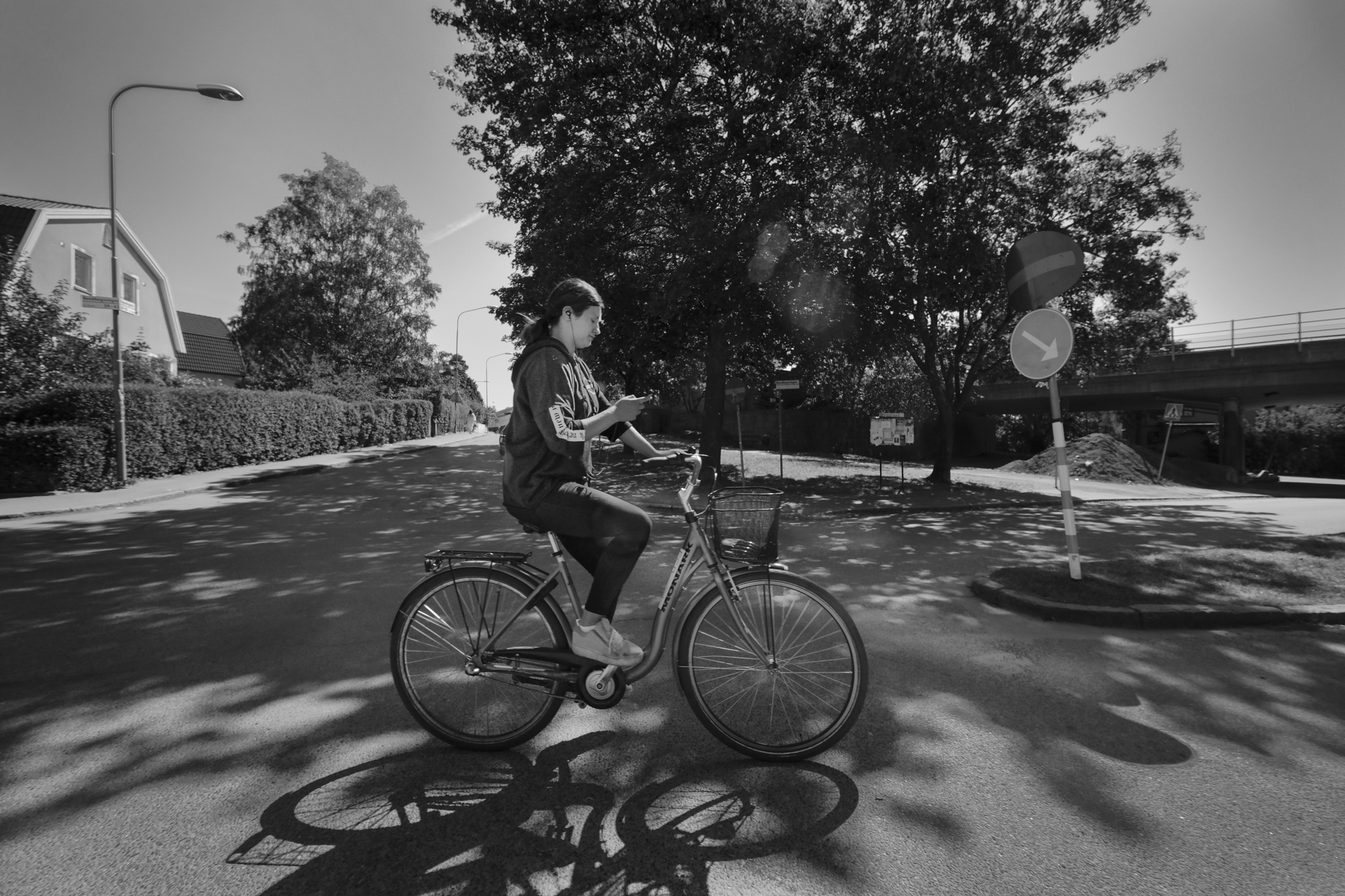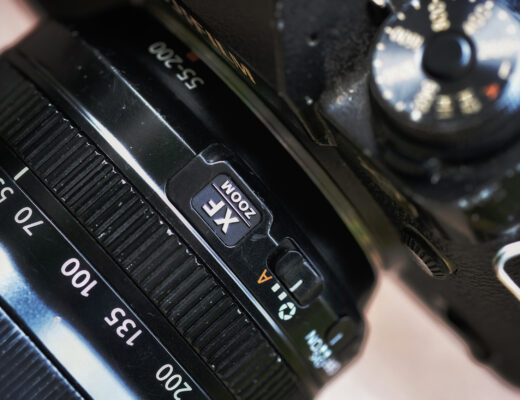This will not be a regular lens review. I’m no professional lens reviewer and I don’t primarily evaluate lenses from a technical point of view. My objective for requiring a lens is if I can make use of it and have fun with it. In the same way I’m no pixel peeper, I don’t value photos from a technical point of view. We all already have cameras better then Henri Cartier–Bresson ever had, so there are no technical hindrances for getting out and take good photos. This might be a bit of extreme as a statement, so when you read my text, remember this is only my personal perspectives after playing with this lens for two weeks.
My reasons for Fuji
When I started my gradual transition from Canon to Fujifilm seven years ago, my main purpose was to reduce weight and size. I have always appreciated small cameras and as I always bring a camera with me, Fujifilm was a much better alternative than Canon. I really liked that the camera was small and modest, but still very capable of delivering.
Over the years I have collected the smallest of Fuji prime lenses, not the fastest. I currently have the XF18mmF2, XF23mmF2, XF27mmF2.8, XF35mmF2 & XF50mmF2. The 23, 35 & 50 are the lenses that many call the Fujicron series, with a flirt to the classic Leica Summicron. Most of the time my standard kit is a X-E3 and the 23/2.0. A very basic life photographer’s configuration. (The common name for what I do is Street photography, but I find that too reductive. I photograph people and life in Stockholm. I find the term ‘life photographer’ much better as an explanation of what I do.)
Only Fuji lenses
After more than 30 years with Canon, I was used to a situation with a number of third-party lens manufacturers to select lenses from, in parallel with the Canon lenses. With Fuji the situation has been quite the opposite. The main bulk of lenses are Fuji lenses with a few options from other manufacturers.
Then a for-me-unknown manufacturer, Laowa, announced a manual lens, a 9mm lens with Fuji mount. Not a fish eye lens but a lens that worked as a traditional wide angle lens, but with a coverage up to 113°. No auto focus, no automatic aperture, but the same form factor as the Fujicron series and the same low weight.
My immediately thought was that this is a lens that Fuji should have done, but after some more thoughts I came to the conclusion that this might not been possible – not with the standards that Fuji has set for Fuji lenses.
In the same time I got a terrible relapse of GAS (Gear Acquisition Syndrome – a terrible disease that most photographers have). My method as a photographer is almost exclusively working with wide angle. I like to be able to photograph where I am. Targeting people at a distance with telephoto lenses does not at all give the same sense of presence. That’s not for me. So a 9mm lens was something to drool over, so after giving it some thoughts I decided to give it a go.
When I put the lenses next to each other, the Laowa feels a bit like ‘the cousin from the country side’. It’s a bad metaphor and may even be perceived as mean, but please understand me correctly. Laowa looks a bit like a Fujicron lens, but still not. It’s a fine lens, in its own way, but it doesn’t work or perform as a Fujicron lens. It has its own qualities and problems, so it should be used according to its own capabilities.
But as everyone can see in the picture, the lineup is incomplete. There’s a gap between the Laowa and the XF23mm2. Here’s a place I reserved for the XF18mmF2 Mk II, if it ever shows up. Hopefully in a Fujicron version. But that’s another story. Back to Laowa.
I have used the Laowa for about two weeks as my standard lens together with the X-E3. The working method is simple – I use fixed focus. At aperture f/8, the lens is sharp from about 0.4m to infinity. Then I set the shutter to 1/1000 and allow auto-ISO to make sure the image is correctly exposed. Because this is shooting without auto focus, the camera is lightning fast.
I’m 10cm from the fence in the right side of the photo. Let your eyes follow the fence to the left. After 1/3 of the photo the fence is approx 40cm from the lens and it’s sharp, and the whole photo is sharp at the back of the soccer field.
Technical issues
When something at first impression is almost too good to be true, then it usually is just too good to be true. There are some technical issues with this lens that one has to be aware of, and the most problematical issues appears in strong sun light. When shooting with the sun falling into the lens, a few optical issues occur. Look at the right bottom at the photo above and you will find significant flare.
It’s even more obvious in the bottom center of the next photo.
I have never seen anything like this when using a Fuji lens and that’s what I mean when I state that this couldn’t have been a Fuji lens.
On the other hand, if I accept that this is primarily a lens for artistic works and experimentation, some optical issues can be used creatively. In this photo the sun rays are treated in another strange way by the lens, creating a pattern that can be interpreted as sun rays.
Another issue that is obvious is that the lens is vignetting – at f/2.8 a lot, at f/4 it’s still there and even possible to see at f/5.6. Depending on how this lens is used, this can be a show stopper or just something that doesn’t matter much. As I’m stepping it down to f/8, I have no issue with this and I could probably manage the vignetting on all apertures. It’s all about what you shoot.
Getting close but not too close
No one understands how close you can get with this lens. The lens almost shoots around corners, and it’s absolutely necessary to NOT put your foot out for the next step as the foot will surely be found in the bottom of the photo.
Everything with this lens is easy to overdo and when people or things get out in the edges of the photo the lens loses proportions.
This series of a roller skier shows how fast proportions goes extreme. The skier comes up from behind and the first shot gives him very long ski poles, while the two following shots looks more OK in proportions.
As things are stretched at the edges of the image, this can also be used to underline things. This squeeze get some extra squeeze as the car in the middle gets proportionally smaller.
But it’s in every aspect very easy to fall into mannerisms, as proportions can excite to a point where everyone except the photographer quickly thinks it’s getting tedious.
All the good things about the lens
For me this lens is more fun than trouble. I find the sharpness OK for my requirements and I have no complaints about colour rendering, besides the issue when the sun is falling right into the lens.
As I like to get close to people when I take pictures, this is probably how close it can be. And with 24 Mpix in the camera there are no problems to crop the photos if proportions are getting out of hand. With the right handling this can be a lot of fun.
I will end this personal review by showing some photos I have taken the last two weeks. These photos are no master pieces – they are only there to show how this lens works.
I brought the lens to the Stockholm Marathon. Here’ a few examples from that race.
Finally some B&W. These are processed and cropped. Just for fun.




Works fine on a fun to have basis
My conclusion is that this lens is for fun. I’ve had a lot of fun with it since I got it and I’m going to have more fun with it in the future. I have problems with the flare issue and have asked the vendor about that, but I have found several similar remarks on the net, so this is probably nothing just with my lens – it’s probably a consequence of the construction.
My conclusion is that this lens will never outperform any of the Fuji lenses. The technical aspects of designing such an ultra-wide lens can not be disregarded. I seriously doubt that many professional photographers would use this lens to bring in the bread, but I think that many photographers will love it for what it is.





























